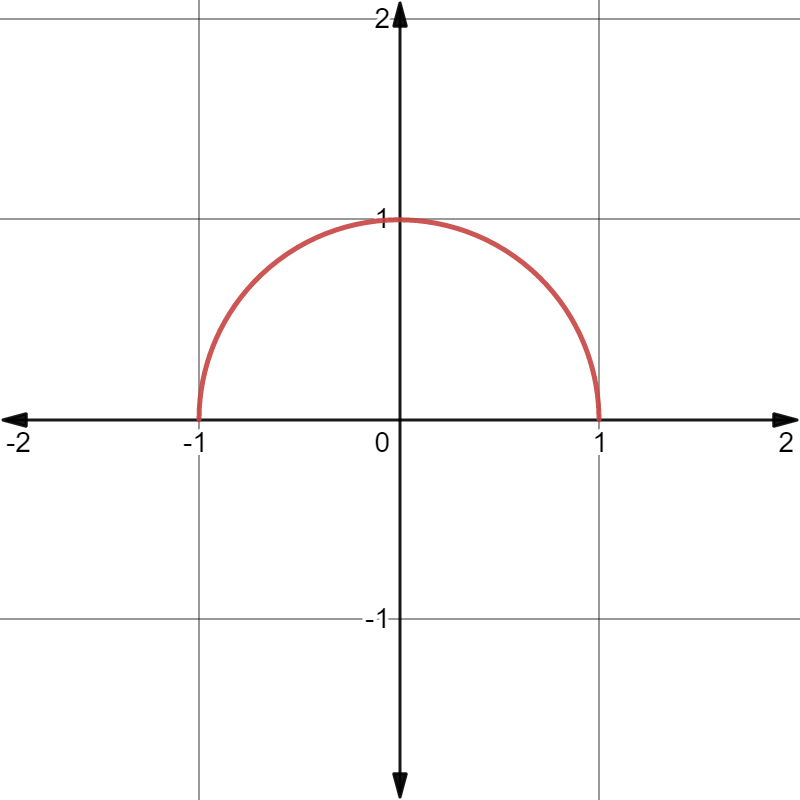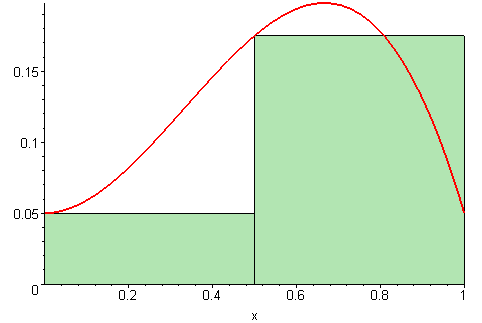Approximating π and the Circumference of the Universe on a Business Card
Note: this article was revised in Revisiting the “Pi Business Card”
Warning: my calculus and programming skills are pretty amateurish. Experts, try not to cringe
I saw a reddit comment claiming you can calculate π using a circle, and immediately had three thoughts:
- That’s freaking awesome
- It’s probably a bad thing that I don’t know how to do that
- That would be awesome on the back of a business card
So, I started banging rocks together with a calculator until I figured out the equations.
Where does π come from?
For the uninitiated, π is just the ratio between a circle’s diameter and circumference. If you laid a 1 foot wide circle of string on the floor, that piece of string would be 3.14 feet long. In other words, its circumference is equal to π times the diameter: \(c=2\pi r\). There are plenty of efficient formulas to calculate the value of π, but it’s difficult to understand why they converge to π as a naïve student.
Area of a circle and π
The area of a circle is π times the radius squared: \(A=\pi r^2\). If the radius of the circle is \(r=1\), its area is π. If I want to solve for the value of π, all I need to do is find the area of the \(r=1\) circle using another method, and the answer is π! (\(A=\pi\))
A circle is defined by the equation \(x^2+y^2=r^2\), and half the circle is \(y=\sqrt{r^2-x^2}\).

Graph of \(y=\sqrt{r^2-x^2},r=1\)
Now that half of the circle is represented as a function of x, it’s possible to find the area underneath that curve by taking the definite integral of the function. The integral of the function between 0 and 1 is really the area of 1/4 the circle (represented by the purple shaded region in the graph below).

The circle is \(x^2+y^2=r^2,r=1\). The shaded region represents \(\int^1_0{\sqrt{1-x^2}dx}\), which is \(\frac{\pi}{4}\)
Therefore, taking the integral of 1/4 the circle, then multiplying by 4 is the area of the circle, which is equal to π!
$$4\int^1_0{\sqrt{1-x^2}dx}=\pi$$
Circumference of the Universe
The circumference of the Observable Universe is a great novelty problem to demonstrate the precision of π. According to NASA at JPL, 40 digits of π is precise enough to calculate it within the radius of a single hydrogen atom. JPL themselves only use 15 digits.
Putting it on a business card
As of writing this page, my very limited programming experience is in C++. Python looks like an awesome language, and its beautiful syntax is much more conducive to printing on a business card. 🙂 Using one of Python’s many libraries to take the integral would be infinitely easier and more efficient, but using the Fundamental Theorem of Calculus (a Riemann sum) to approximate π is way cooler. To be clear, this is an extremely inefficient (but badass) way to calculate pi; I ran it for 10 billion iterations and couldn’t even get close to 15 digits.

A Riemann sum looks like this, with the rectangles becoming infinitely narrow. An integral is just the area of all the rectangles added together [1]
In my case, the integral can be represented as this Riemann sum:
$$\pi=4\int^1_0{\sqrt{1-x^2}dx}=4\lim\limits_{n\to \infty}\sum_{i=1}^n\sqrt{1-(\frac{i}{n})^2}\cdot\frac{1}{n}$$
To approximate π in a computer program, the limit can be dropped and n replaced with a reasonably large number. This is how I translated it into python:
import math
n = 1000000
dx = (1/n)
s = 0
for i in range(1, n):
x_i = (math.sqrt(1-math.pow((i/n),2))*dx)
s += x_i
print("Approximate pi:", '{:0.6}'.format(4*s))
d = 8.8E26 # Observable universe, meters
print("Circumference of the Universe:", '{:0.1e}'.format(d*4*s,1), "m")
## Accurate to (8.4E-5)%, or 840 parts per billion!Output:
Approximate pi: 3.14159
Circumference of the Universe: 2.8e+27 m[1] “File:Riemann sum (leftbox).gif” by 09glasgow09 is licensed with CC BY-SA 3.0. To view a copy of this license, visit https://creativecommons.org/licenses/by-sa/3.0
Last modified: 2021-09-10